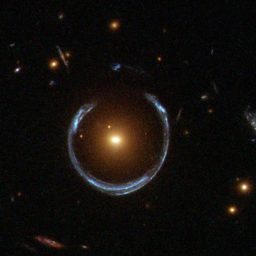Coffee talks
Monday 04/12/2023 @ 14:50, Sala riunioni quarto piano e on-line (meet.google.com/sue-bwvk-axf)
Filippo Malvolti (University of Bologna, Bolonga, Italy), "Shedding light on the anomalous lens JVAS B1555+375 with global-VLBI"
The Lambda-CDM model is able to describe the large scale structure of the Universe, but it is inconsistent with observations on galactic/sub-galactic scales. This is exemplified by the so-called "missing satellite problem": only a few satellites are observed in the Local Group, despite the large number of sub-halos predicted by simulations. To test this discrepancy at high redshift, the only tool is provided by strong gravitational lensing, that can probe the presence of these sub-halos by means of their gravitational effect at the milliarcsecond scale. Some gravitational systems show deviations from the predictions of a smooth model, known as anomalies, which are often attributed to the presence of sub-halos and used to statistically test the predictions of the Lambda-CDM model. In this thesis we present a study of the lensing system JVAS B1555+375 with a global-VLBI experiment at 18 cm at milliarcsecond angular resolution. This system shows a strong flux ratio anomaly and near-IR observations revealed the presence of an edge-on disc in the lensing galaxy, which crosses over the pair of images exhibiting the anomaly. Our high resolution and high sensitivity observation revealed for the first time the presence of an astrometric anomaly in the same pair and the detection of only three of the four predicted images. The structure of the background object was resolved in two of these three images and is compatible with a jetted AGN. We can explain the anomalies in the system by modelling the lens with an isothermal ellipsoid, an exponential disc, and without requiring the presence of a dark matter sub-halo. We conclude that the baryonic ionized matter of the edge-on disc is the dominant responsible for the observed anomalies. Our study confirms that not all lensing anomalies are due to dark matter sub-halos and not accounting for the full complexity of the lenses may overestimate the amount of substructures in predicted distant lensed galaxies.

